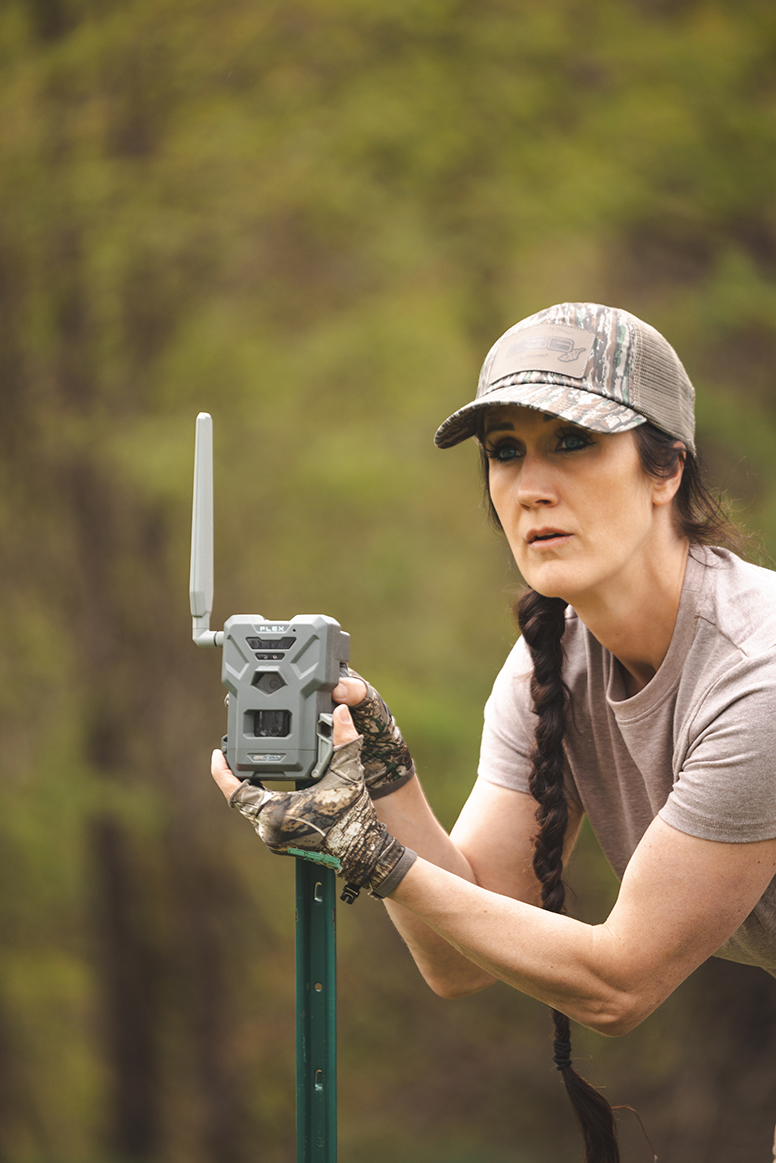How to Best Plan Year Round for Deer Hunting
Deer hunting may officially start in the fall, but much of the hard work happens beforehand. While some might consider this preparation hard work, it’s a fun year-round activity that enhances the overall hunting experience and boosts chances of success.

Scouting is essential and can be done in various ways. My favorite is gathering the family for summer evenings of watching fields or open areas from a distance with a spotting scope. This allows our kids to play while we scout and identify bucks on our property. We also like to use summer months to get out on the property, check stands, cut lands and ensure all the things that can be done ahead of time are complete so we can spend more time hunting once the season opens.
Another effective scouting method is using trail cameras. We run cameras year-round capturing valuable information about deer habits, antler growth, and fawn development. Even when we're busy with other activities, cameras provide continuous data without the need of actually being in the field. Another way to learn without stepping foot in the field is through all the different apps available. I use HuntStand and love looking over different maps not only of the property I hunt, but neighbors’ property to learn and understand why the deer do what they do.
Preparing gear is another crucial step. This includes range time, selecting ammo and gun combinations, and determining effective range for the upcoming season. With constant advancements in technology, I enjoy trying new ammo and gun setups each year.
I’m a huge fan of using ammunition specifically designed for what I’m hunting. When it comes to deer, I recommend Winchester Deer Season XP for its excellent knockdown power and accuracy. The Extreme Point bullet provides more impact trauma and energy transfer, resulting in larger wound cavities and quick, clean kills. Although Deer Season XP has a variety of offerings, I usually pair this with a Winchester XPR in a .300 Win Mag, 6.5 Creedmoor or a 350 Legend.
Years back when Deer Season XP first came out I remember taking it out for the entire fall season and simply being amazed with results. The engineers at Winchester are constantly innovating and doing their best to make all of us the most effective hunters possible. They study deer size, what it takes to go through hide, bone structure, etc. and came up with an incredible solution to provide the very best knockdown power along with using a tapered jacket for lethal penetration.
From one hunt to the next, I was literally taking big mature bucks off their feet. The other reason I love Deer Season XP is because it takes any guesswork out of picking ammo. When you get to a store it often times can be a bit overwhelming with all the choices, but when you read Deer Season XP you know it will work amazing for all of your deer hunts.
Once you've scouted and prepared gear, plan for post-harvest processing especially in early season or hot weather. Field dress deer quickly, start the cooling process by filling the chest cavity with ice if traveling, and bring coolers for deboning the meat. Many states prohibit transporting full carcasses across state lines, so deboning is essential.
Consider calling a processor with walk-in coolers for help in hot weather if you don’t have the facility to cut up a deer or get it properly cooled down. This is such an important step to having delicious meat - you owe it to the animal and your family to get the best tasting venison possible.
If you plan to mount the deer or are thinking this could be a possibility, have a strategy in place. Most states don’t allow transporting brain or spinal material across state lines. For shoulder mounts, cape and freeze the head before leaving. If unsure how to do this, a local taxidermist can assist. This allows for just the cape and horns to be brought home and all brain material left behind. Having a large saw to skull plate antlers is also helpful.
If flying, try buying pool noodles and duct tape to place on antler tips to keep them from being damaged in transit. I also like to buy a large plastic container and place my horns in there, ensure the lid will fit and then place my cape in a plastic bag and see how it will best fit. Once you get the correct layout, put it in the freezer and freeze it solid in that same position. This helps eliminate a ton of extra baggage when flying home and allows you to bring your trophy without having to wait for it later and pay high shipping fees.
For European mounts, I believe hiring a local taxidermist to ship the finished product is often the best option.
Big game season is eagerly anticipated all year, but with proper planning, scouting, and preparation, you can stay engaged in hunting year-round and increase your chances of success.







